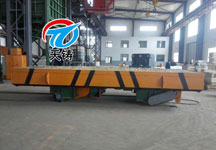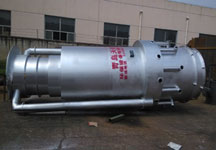Around the battle of pollution prevention and control, the most important thing is to win the battle of defending the blue sky. Following the "Ten Articles of Atmosphere", the strategic layout of comprehensive control of air pollution once again ushered in the programmatic document - "Three-year Action Plan for Winning the War of Defending the Blue Sky". The four key areas of energy, industry, transportation and land use brought from terminal control are regarded as new highlights of air pollution control in this round.
From the trend of vigorous treatment of symptoms to the treatment of both symptoms and symptoms, the prevention and control of air pollution ushered in a breaking point.
At present, the Blue Sky Defense War is continuing to advance in depth. After realizing the phased goal of "ten atmospheric articles", the prevention and control of atmospheric pollution did not stop, but stood at the origin of the new stage.
In early July, the State Council issued the "Three-year Action Plan for Winning the Blue Sky Defense War" (hereinafter referred to as the "Action Plan"), which clearly defined the timetable and road map for winning the Blue Sky Defense War. By 2020, the concentration of PM2.5 below the standard in cities of prefecture level and above will decrease by more than 18% compared with that in 2015, and the ratio of good days of air quality in cities of prefecture level and above will reach 80%. At the same time, we should adjust and optimize the industrial structure, energy structure, transportation structure and land use structure, and strengthen joint regional defense control and heavy pollution weather response. The issuance and implementation of the Action Plan has sounded the trumpet for national action to win the Blue Sky Defense War.
The Action Plan is the second blueprint for the prevention and control of air pollution after the Ten Atmospheric Articles. In the view of many people in the industry, the target setting of the Action Plan continues the "Ten Articles of the Atmosphere" with the reduction of particulate matter concentration as the main objective, and at the same time, the idea of reducing days of heavy pollution will promote the overall improvement of environmental air quality. In terms of time scale, more attention should be paid to the prevention and control of pollution in autumn and winter, and efforts should be made to reduce heavily polluted weather. The focus of specific measures is also more prominent, such as coal-fired aiming at bulk coal substitution, motor vehicle pollution control aiming at diesel trucks. By the end of 2020, Beijing, Tianjin, Hebei and its surrounding areas, Fenwei Plain will phase out the emission standards of "Guosan" and below and operate more than 1 million medium and heavy diesel trucks.
A prominent feature is to pay more attention to source management and precise policy implementation. The plan of action takes the effective promotion of clean heating in winter as an important measure to be deployed. It is proposed that before the heating season 2020, on the premise of guaranteeing energy supply, the plain areas of Beijing, Tianjin, Hebei and the surrounding areas, Fenwei Plain will basically complete living and replace bulk coal for heating in winter. At the same time, we will accelerate the adjustment of energy structure and build a clean, low-carbon and high-efficiency energy system as an important measure, and insist on developing non-fossil energy and using fossil energy cleanly and efficiently. Up to the deployment and implementation of the Action Plan, we will focus on resolutely winning the battle to defend the blue sky. In the future, we will focus on the transformation from pollution control to comprehensive improvement of air quality.
In terms of governance measures, the next three years basically follow the practice of the past five years, but also put forward some new requirements. The Plan of Action has increased the Fenwei Plain to a key area, and the Pearl River Delta region, which has achieved stable standards, is no longer a key area. Beijing's ambient air quality improvement target should be further improved on the basis of the 13th Five-Year Plan. Especially for Hebei, Henan and Shandong provinces, the industrial restructuring and energy restructuring goals in the Action Plan are obstacles that need to be overcome. In terms of key measures, more attention should be paid to the control of four major pollution sources, namely, industry, bulk coal, diesel trucks and dust.
So far, the constrained indicators of the 13th Five-Year Plan have put forward the target of ambient air quality and total pollutant discharge by 2020. The Ministry of Ecology and Environment has decomposed the target into provinces, regions and cities, and provinces have further decomposed the target into cities. At present, on the one hand, the central environmental protection inspectors put pressure on the local government, on the other hand, the local government also employs or consults professional teams with special funds to help improve the ability of air management. Next, the Ministry of Ecology and Environment will urge and guide Beijing and its surrounding provinces and cities to further strengthen pollution control, carry out joint regional defense and control, effectively reduce the intensity of pollution emissions, and strive for greater improvement goals.
On the one hand, the plan of action will further adjust and optimize the industrial structure, on the other hand, it will also point out new development directions and opportunities for relevant industries. In addition, the 2018 National Conference on Environmental Protection, the 2nd National Congress and the 8th National Conference on Environmental Protection were held one after another. In 2018, the inspection and special supervision started. Driven by the "policy side" and "supervision side", the prosperity of the waste gas treatment industry remains the same. Among them, enterprises with related business such as industrial energy consumption reduction, industrial pollution control and environmental monitoring will gradually benefit from it.












